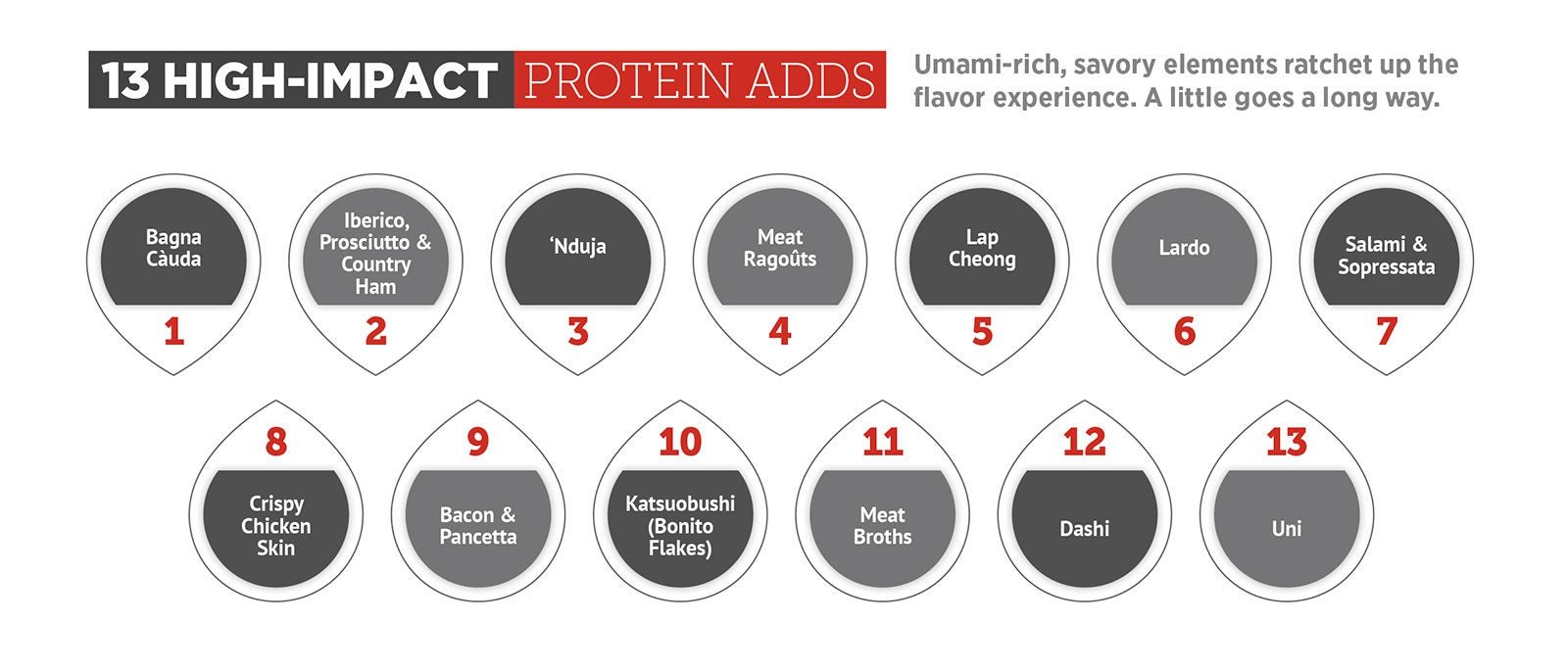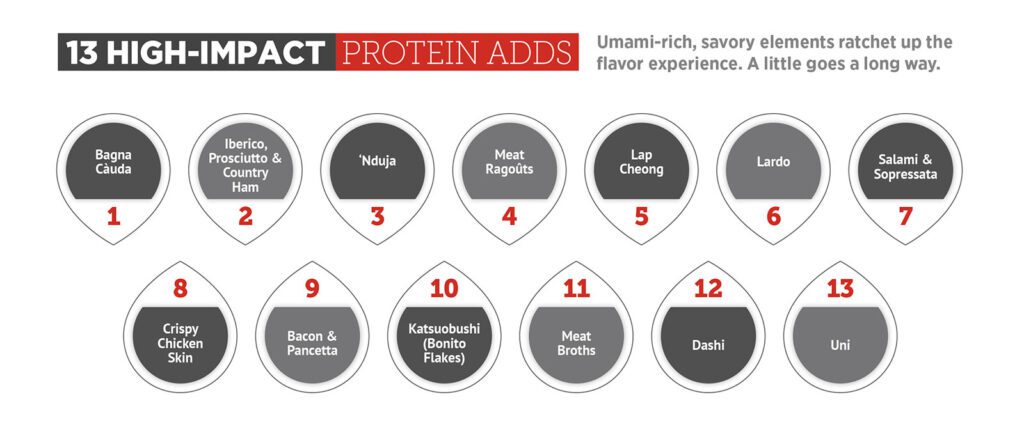The veg-centric movement is getting bigger and more influential, impacting menu concepts and development across the country. In fact, in our most recent street-level tour of new restaurants in the three major markets of Chicago, New York and Los Angeles, we saw another surge in momentum. Chefs are exploring this menu opportunity, pulling vegetables into the center of the plate while making them craveable with high-impact finishes. “The reason we continue to revisit the opportunity with veg-centricity is that it’s one of those rare macro trends that is going to continue to grow and evolve and have significant impact on all foodservice segments,” says Gordon Food Service Corporate Consulting Chef Gerry Ludwig, CEC.
Veg-centricity sees fresh produce, primarily vegetables, as the star of the plate. It is decidedly not vegetarian, vegan or even flexitarian. Chefs are applying small amounts of boldly flavored, umami-rich proteins to up the ante on craveability, from bits of country ham to a swipe of bagna càuda—a savory dip made with anchovy, garlic, olive oil and butter. “The result is plant-based dishes that have levels of craveability not obtainable through plant-based proteins alone,” Ludwig says.
The veg-centric movement was born in Los Angeles 10 years ago, when Travis Lett, executive chef of Gjelina, menued his wood-grilled radicchio. “That alone is pretty tasty, but then he brushed on bagna càuda during the cooking process, kicking up the flavor significantly,” Ludwig says. “Today, more chefs are losing the meatless mindset. They’re realizing that veg-centric dishes appeal to 90-plus percent of their customer base, while vegetarian dishes appeal to less than 10 percent. This trend is showing very clearly that customers will order more plant-based dishes if they are craveable.”
This is Next Course magazine’s third year exploring the opportunities in veg-centricity. Ludwig presents three key areas of growth and menu potential.
1. Protein adds are expanding
Bacon has competition now, with chefs looking to other meaty additions for a blast of umami. “Chefs are reaching for all kinds of flavor-forward ingredients,” Ludwig says. Heirloom tomato drizzled with bagna càuda and finished with a scant sprinkle of toasted lap cheong sausage appeared on the menu at Here’s Looking at You in Los Angeles menus. “Out of the 1,197 dishes we tried on our street-level trends tour, this was our favorite.”

Creative, craveable expressions of the veg-centric trend abound: At Hearth in New York, oven roasted buttercup squash is topped with shaved apple and herbs, then served in a pool of Hearth broth (beef, chicken, pork broth blend) and at Rose Cafe in Venice, California, deep-fried Brussels sprouts are served in a pool of dashi, topped with a soft egg.
2. Vegetable category is emerging
With veg-centricity gaining momentum, chefs are shifting menu design from sides to vegetables. “They’re adding a carefully conceived section of vegetable dishes that are at top of the menu,” Ludwig says. For example, Bad Hunter in Chicago gives just as much menu real estate to its “Plants” section as it does to its “Protein” section, with offerings like Grilled Cantaloupe with X.O. sauce, radish and buttermilk. Hearth in New York has eliminated its side dish category and now features 10 to 12 veg-centric dishes every night under “Vegetable,” front and center on its menu. Appellation in Chicago lists “Vegetable” close to the top of its menu, right after “Soups and Salads,” and Giuseppe Tentori’s new menu at Chicago’s GT Prime has no side dishes. “Instead, he has a carefully curated section of vegetables, probably half of which are veg-centric,” Ludwig says.
3. Veg-centric as a theme
Some chefs are embracing veg-centricity as a menu philosophy, not just a trend. When Josef Centeno opened Restaurant PYT in Los Angeles last year, he described it as a vegetable restaurant, where meat lends supporting flavor. Dishes include Blistered Okra with nori ranch dressing, black sesame, and lemon, and a Salt Baked Turnip wrapped in hoja santa with red walnut, French feta, and sugar snap pea pesto. Dan Barber’s new bar menu at Blue Hill explores veg-centricity, where he says vegetables and whole grains are center of the plate, with meat-based proteins featured mostly as condiments.
Clearly, the opportunity is huge with veg-centric. It offers fantastic menu differentiation and can be a big sales builder for operators.
Other menu examples:
- Oven-roasted Brussels Sprouts tossed in bagna càuda—The Cannibal, Culver City, Calif.
- Radishes with bagna càuda butter, lemon, sea salt—Roberta’s, Brooklyn, N.Y.
- Wood-Grilled Escarole brushed with bagna càuda and topped with bread crumbs—Manuela, Los Angeles
- Oven-Roasted Whole Carrots with crispy Iberico ham—Café Medi, New York
- Charred Radicchio with balsamic braised lamb ragout, pistachios, breadcrumbs, fennel pollen —Mardi, West Hollywood, Calif.
- Sweet & Sour Eggplant topped with crispy pancetta—Giant, Chicago











